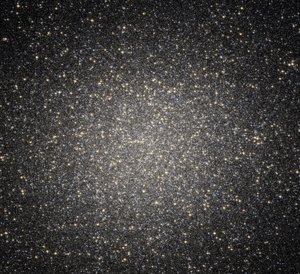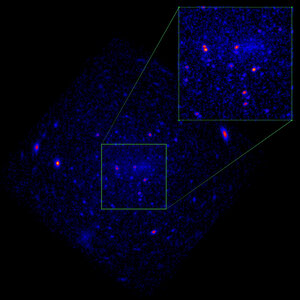

Black hole candidate in Omega Centauri
An international team of astronomers has used more than 500 images from the NASA/ESA Hubble Space Telescope spanning two decades to detect seven fast-moving stars in the innermost region of Omega Centauri, the largest and brightest globular cluster in the sky. These stars provide compelling new evidence for the presence of an intermediate-mass black hole (IMBH).
This image shows the location of the IMBH in Omega Centauri. If confirmed, at its distance of 17 000 light-years the candidate black hole resides closer to Earth than the 4.3 million solar mass black hole in the centre of the Milky Way, which is 26 000 light-years away. Besides the galactic centre, it would also be the only known case of a number of stars closely bound to a massive black hole.
[Image Description: This image presents three panels. The first image shows the global cluster Omega Centauri, appearing as a highly dense and numerous collection of shining stars. The second image shows the details of the central region of this cluster, with a closer view of the individual stars. The third image shows the location of the IMBH candidate in the cluster.]





